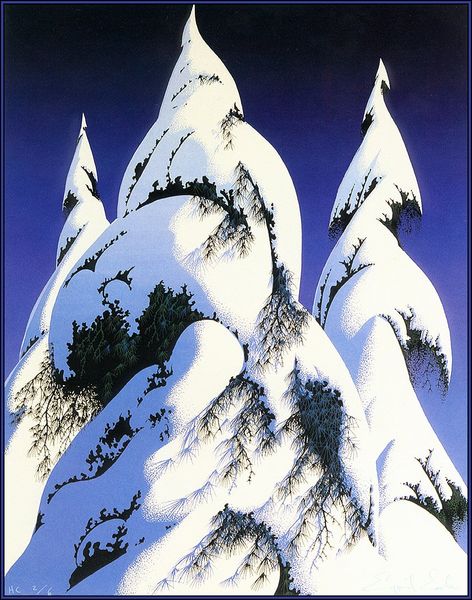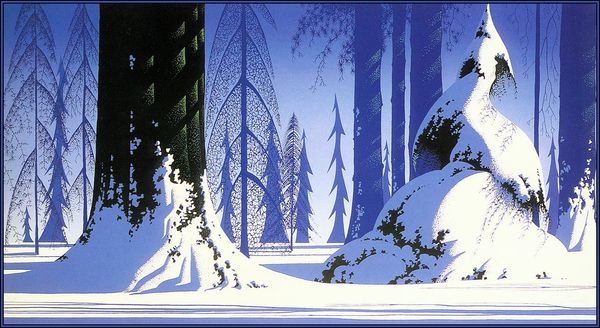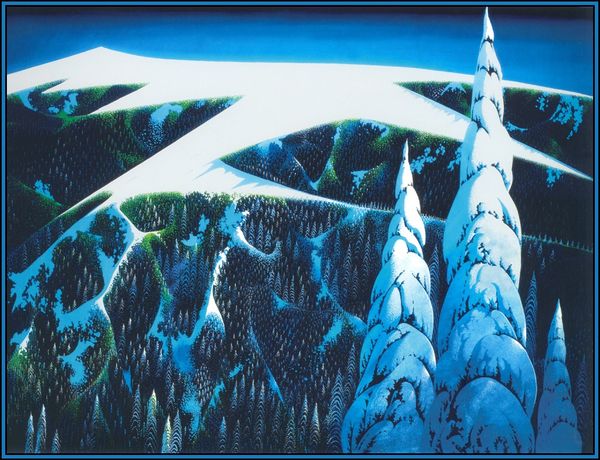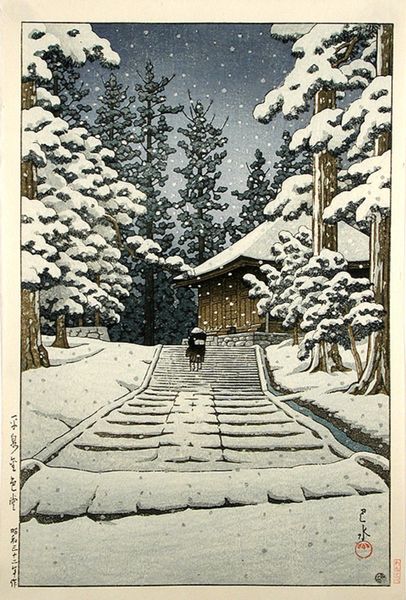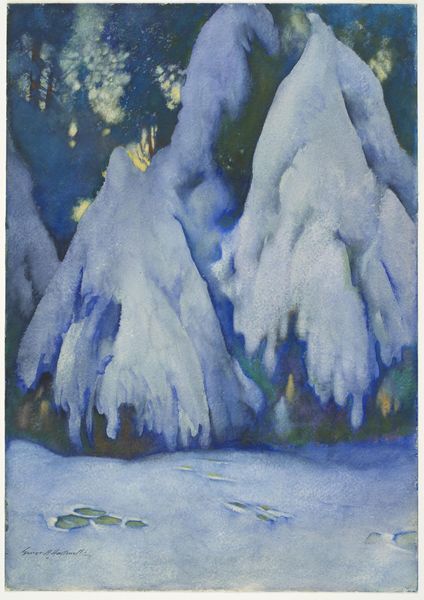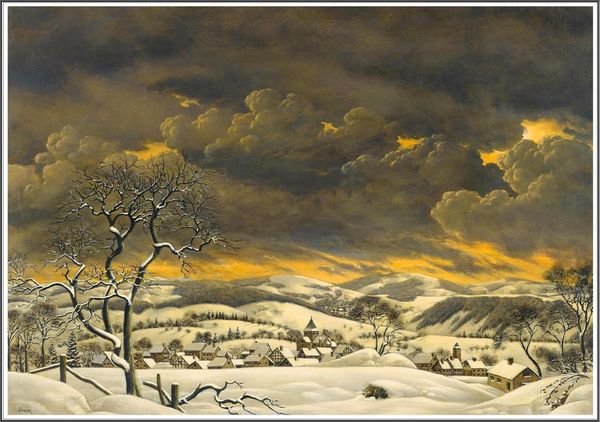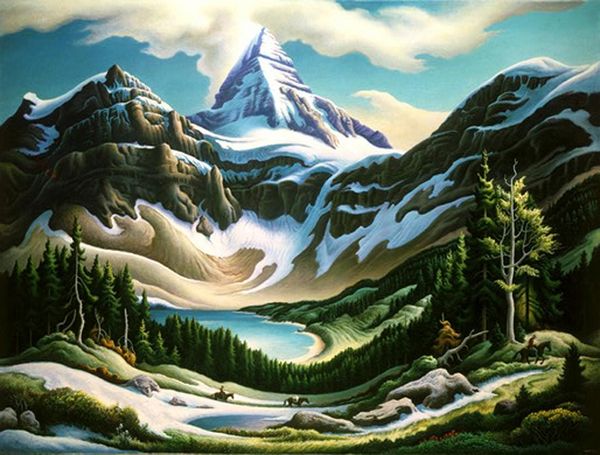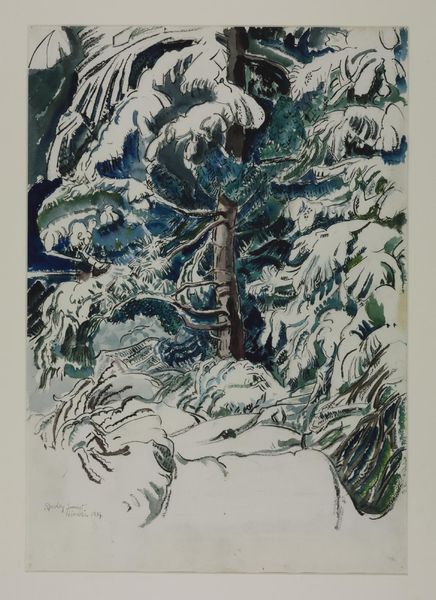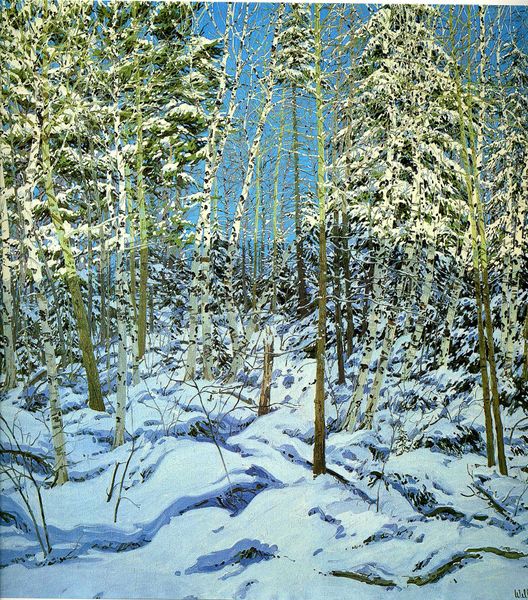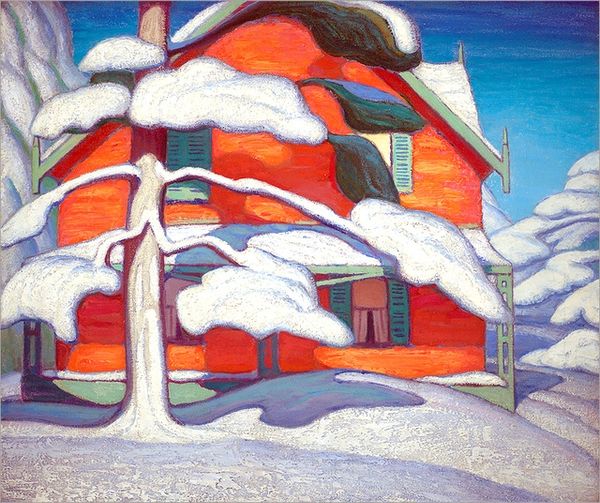
Copyright: Eyvind Earle,Fair Use
Editor: This is Eyvind Earle's "New Fallen Snow" from 1998, painted in tempera. The stark contrast and cool blues create an incredibly peaceful and almost surreal landscape. What strikes you most about its formal qualities? Curator: The composition is rigorously structured, wouldn't you agree? Note the strong verticality of the trees and the way the snowdrifts create these curvilinear forms that lead the eye upward. The palette is deliberately limited, enhancing the feeling of a crisp, cold atmosphere. Observe also the meticulous detail given to each element: the sharp definition of the trees and the smooth surfaces of the snow. Editor: It's interesting you point out the verticality because the snow makes the trees feel grounded and heavy. How does that tension play into the reading of the work? Curator: Precisely. It's about visual balance, the interplay between opposing forces. Earle seems to be less interested in the pure imitation of nature and more concerned with the construction of an aesthetically compelling arrangement of shapes and colors. Consider how he abstracts forms to essential geometric elements, flattening the picture plane to highlight their graphic quality. Do you perceive the reduction? Editor: Yes, it's hard to ignore once you see it! The crisp lines and geometric forms transform the natural scene into a designed one. I see how the flat application of tempera emphasizes these forms, contributing to a powerful, stylized aesthetic. Curator: Exactly. It’s not just about what’s depicted but about the way the image is constructed that conveys its essential qualities. By directing your eye and thought, one learns a great deal about what makes successful visual art. Editor: Thank you. I didn't quite appreciate how deliberately Earle composed his landscapes!
Comments
No comments
Be the first to comment and join the conversation on the ultimate creative platform.
